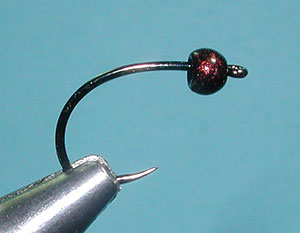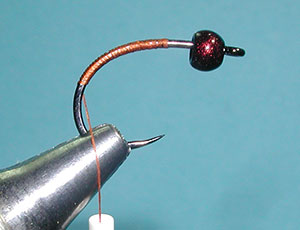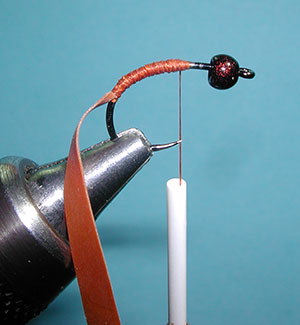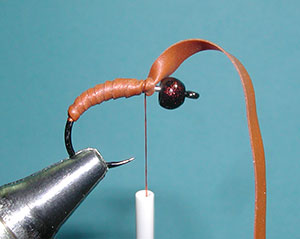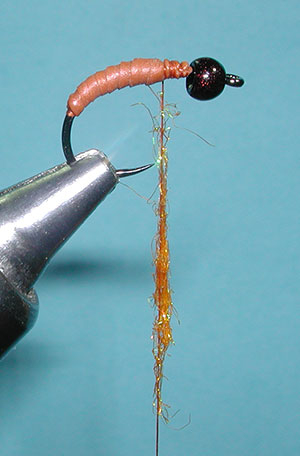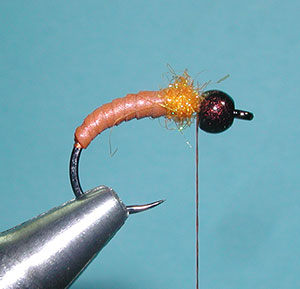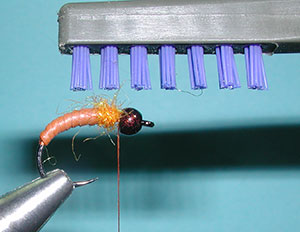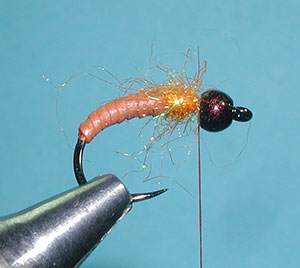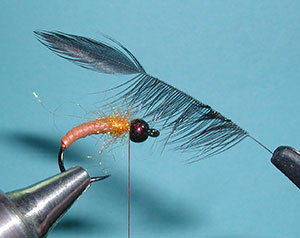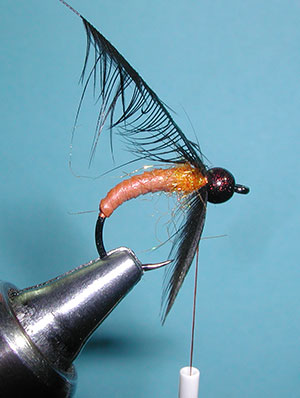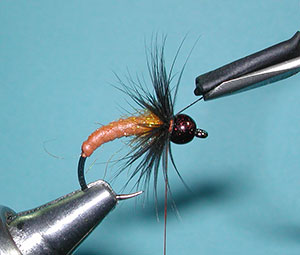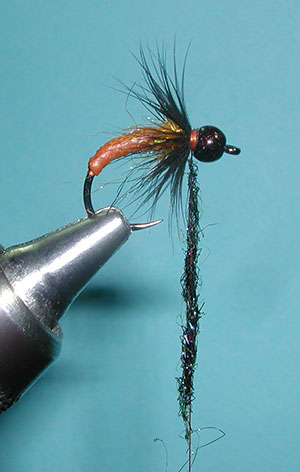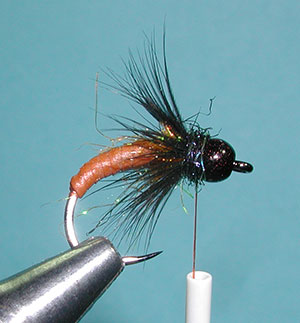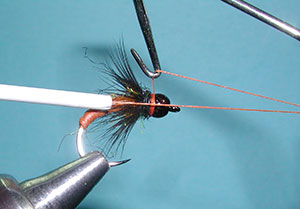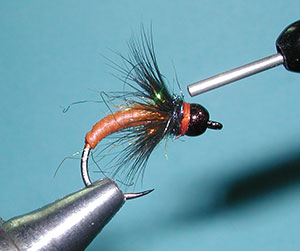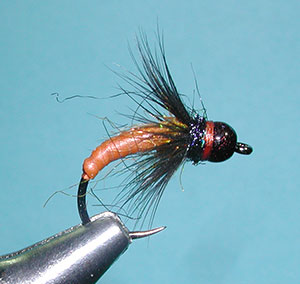October Caddis Soft Hackle – last chance for an ultimate meal
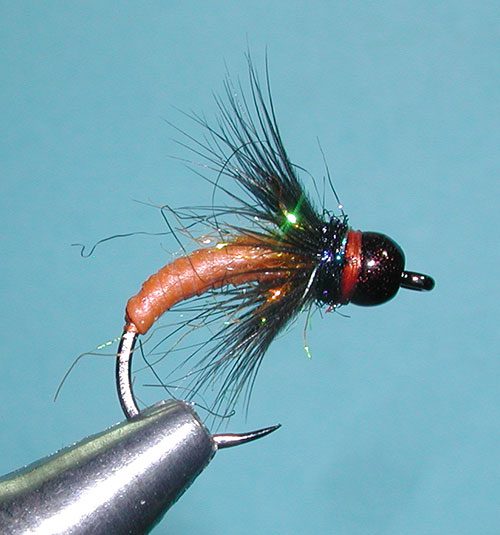
October Caddis Soft Hackle
Tying Instructions
| Materials
to Order Material, click the link |
|
|---|---|
| Hook | Firehole 316 #8-10 |
| Thread | Uni Thread 6/0 Rusty Brown |
| Body | Kiley's Nymph Skins - Rust |
| Thorax | UV Black and UV Hot Orange Ice Dubbing |
| Bead | Plummeting Tungsten Beads- Black Ruby 1/8 |
| Hackle | Whiting Hen Cape, Black |
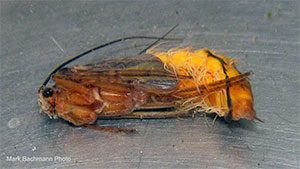

Curtis Fry
October Caddis Soft Hackle
The October Caddis Soft Hackle fly pattern is credited to Curtis Fry of Fly Fish Food. He introduced this effective but simple pattern off their blog in Oct 2017. The October Caddis is an important hatch during the Fall. They are the last chance a trout has for a big meal with little effort prior to winter lethargy.
Life Cycle
The October Caddis are cased-type caddis that create a case of leaves and twigs to develop. As they get larger, they need to move to a larger case often made of gravel and cemented together with other mineral material. These cases can get to 1.5 inches in length. The larvae will feed on leaves and diatoms on the stream bottom, preferring moderately fast currents.
By mid-summer, they attach their cases to the substrate and seal off both ends of their case. By late summer, they molt into a pupa and emerge out of their cases. The October Caddis pupa like to swim along the bottom until they find rocks that will protrude to the surface. Once they find this rock, they will crawl up the rock to a few inches above the water surface and the adult will escape it’s pupal shuck. This period of movement is when the October Caddis Pupa wet fly is most effective.
The adults have orange bodies and gray wings. Emergence occurs at night but the trout will key upon the pupa as they are migrating along the bottom. The adult females fly off during the night and return about two weeks later to lay eggs on the water surface in the late afternoon and early evening. The wet fly should be presented along the bottom with the tungsten bead helping to keep the pattern down. Using a two fly rig will help in the presentation. Since these pupa do not swim to the surface, keep the flies along the bottom without using a wet-fly swing or lift, but have the nymph rig swing towards the shore with a slow retrieve.
Morrish October Pupa
Ken Morrish designed a soft hackle October Caddis Pupa pattern in the early 2000’s. It has a lot of influence from his earlier Dirty Bird pattern using a partridge hackle for legs but adding a brown grizzly hen hackle for the wing. Both are tied in the round giving this pattern a distinct soft hackle appearance.
Variations
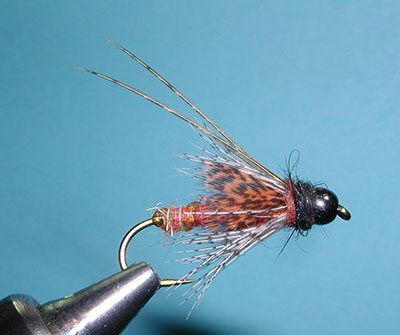
Morrish Deep October Pupa
| Hook | TMC 5263 #8-10 |
| Thread | Uni Thread 6/0 Rusty Brown |
| Body | Haretron Cinnamon Caddis Dubbing |
| Ribbing | Amber Vinyl Ribbing, Medium |
| Bead | Black Nickel , 5/32 (4.0mm) |
| Weight | 0.030 Lead-free wire, 10-12 wraps |
| Wing | CDL Hen Saddle, Speckled Shrimp Orange |
| Wingcase | Pearl Flashabou, 8 strands |
| Antennae | Natural Pheasant Tail Fibers |
| Collar | Rusty orange Hareline Dubbin, one turn and Spirit River UV2 Caddis/Nymph black dubbing |
| Hackle | Hungarian Partridge, one turn |

